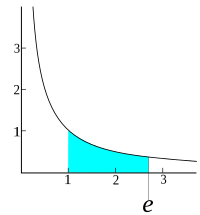
Photo from wikipedia
BACKGROUND Perioperative immediate hypersensitivity reaction (POH) is an immediate hypersensitivity reaction during an anesthesiologist monitored procedure. We report data of clinically-suspected POH (csPOH) patients undergoing an allergist-performed unified diagnostic workup… Click to show full abstract
BACKGROUND Perioperative immediate hypersensitivity reaction (POH) is an immediate hypersensitivity reaction during an anesthesiologist monitored procedure. We report data of clinically-suspected POH (csPOH) patients undergoing an allergist-performed unified diagnostic workup algorithm for POH. OBJECTIVE To describe the characteristics of patients with csPOH, POH events, and the POH outcomes of procedures after the unified diagnostic workup algorithm for POH. METHODS A prospective cohort was conducted in adult patients with csPOH at Siriraj Hospital, a tertiary hospital, in Thailand from January 2018 to August 2022. Diagnostic workup for POH by the allergist included an initial assessment, followed by comprehensive allergological evaluation. Patients were then follow-up for POH outcomes during subsequent anesthesia procedures. RESULTS Of 68 patients were csPOH, only 52 patients were diagnosed with POH by allergists. The incidence was 1:4,304 anesthetic procedures for POH, and 1:11,900 anesthetic procedures for at least grade III POH. Most patients had a grade III (51.2%) or II (46.4%) reaction. The leading identified causative agents were antibiotics (36.8%), antiseptics (21%), latex (13.1%), and morphine (13.1%). Cefazolin and chlorhexidine were the most common antibiotic and antiseptic, respectively. During a median follow-up time of 2.1 years, all 14 patients completing comprehensive allergological evaluation underwent subsequent anesthesia without recurrence of POH. CONCLUSIONS The incidence of POH at our hospital was comparable to the global incidence. Antibiotics were the most common causative agent. Complete records, collaboration among the multidisciplinary team, and comprehensive evaluation of POH allow for safe subsequent procedures.
Journal Title: Asian Pacific journal of allergy and immunology
Year Published: 2023
Link to full text (if available)
Share on Social Media: Sign Up to like & get
recommendations!